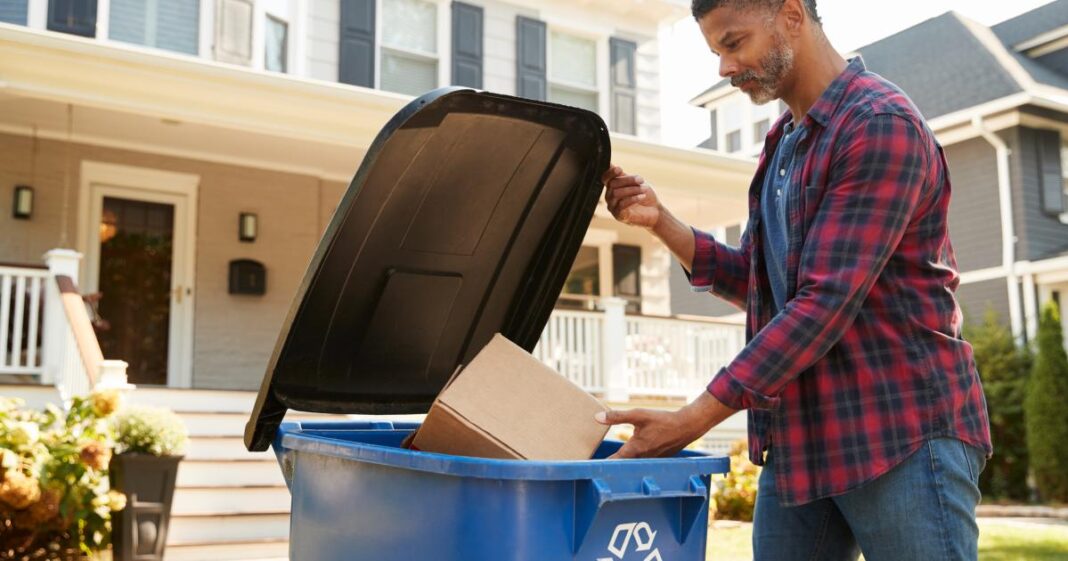This article is sponsored by Procter & Gamble.
How can companies most efficiently gain traction toward circularity? Many discussions tend to focus on closing gaps in the physical materials flow, such as improving the design of packaging to reduce waste and increase recyclability or integrating more post-consumer recycled content into a given product. To build a circular future, it is equally important to link collaboration within packaging value chains.
Upstream stakeholders navigate product sourcing, design and manufacturing before the consumer sees it. These stakeholders and downstream actors collecting, sorting and processing the materials often miss opportunities to work together to reduce, reuse and recycle waste.
A better understanding of downstream operations can inform product and packaging designs that appeal to both consumers and the buyers of the material after its first use, enabling materials to flow into a closed loop more easily.
Making progress
Industry associations, NGOs, non-profits and other coalitions are helping to fill gaps to catalyze collaboration across the value chain. The challenge lies in getting the right players with both the influence and know-how together partnering on gains. To achieve a fully transformed circular economy, we must pursue the practical steps to get there.
It’s important to align the needs of downstream operators processing the recycled materials with the upstream designers and manufacturers, so that the latter can learn more about how to design not only for today’s heterogeneous waste management and recycling infrastructure but to influence how these systems can evolve. Product manufacturers are incorporating some downstream operators’ feedback to help forward recycling and circularity.
This type of collaboration and consumer-centric design is necessary to make progress on circularity, following the waste mitigation hierarchy to improve reduce and reuse rates. By lightweighting packaging, incorporating more post-consumer recycled content and concentrating formulas help brands design for products for circularity.
Designing to reduce packaging
Reduce is about companies eliminating waste from the start, which is the type of change they can control. One way this can come to life is through concentration — using technology and innovation to reduce the volume of liquid in a product by removing inactive ingredients while maintaining the same number of doses in the bottle — all without sacrificing performance or safety.
Mr. Clean, for example, is a liquid all-purpose cleaner; P&G optimized the formula and removed half of the water. In turn, that enabled a reduction in the packaging required, reduced trucks on the road to transport it to stores and improved the bottle’s ergonomics. Together with retailer partners, we demonstrate the value proposition to consumers where less can be more while receiving the same great product they know and love.
Innovating to make reuse easier at home
With concentrated formulas, manufacturers can create refill jugs that are better to handle — easier to lift and pour at home. For example, the Dawn jug of concentrated soap is designed for people to refill their smaller bottles at the sink. Creating this opportunity for easier refills and communicating the associated environmental impact helps nudge more people to refill.
Not all people have space to stock larger refill jugs — for this group, we make it easy to get chores done through a recharge model. Systems for products such as Dawn Powerwash and Mr. Clean Clean Freak include a reusable sprayer nozzle and the product in the starter pack. When it’s time to refill, people buy only the product portion, which comes at a lower price than the starter pack. People need to experience how well the product works and understand the value for the more sustainable option to be irresistible.
Circular, durable solutions on the market remain limited today; as such, packaging requires a responsible end-of-life strategy. That’s why it is critical to manage recyclability with material sorters and processors. For example, after connecting with end users, we replaced metal springs with plastic components on the reusable trigger of Dawn Powerwash and Mr. Clean Clean Freak. Similar insights led Febreze and Swiffer to swap out hard-to-open plastic blister packs on some products to recyclable carton board. Better usage experience and better for circularity.
Collaborating to create systems-wide change
Technology that can efficiently sort and process a wider variety of materials will help everyone in the value chain. Coalitions, collaborations and trade associations are working to drive consistency and education about how material recycling facilities can get more value out of the materials that come through their doors.
Making new recycling processes available can drive change across sectors, better meeting industry demand for recycled content. P&G developed a process, VersoVita, that purifies recycled polypropylene resin using dissolution to return it to near-virgin quality, processing that allows more types of plastic can be recycled and reused. We are licensing the technology to plastic manufacturers globally so they can produce high-quality, recycled resin.
As packaging designers learn more about the downstream sector’s challenges and opportunities, they can take a fresh look at more packaging innovations to create both an easier and delightful user experience and divert more streams from landfill and into circularity. Support from upstream players such as retailers can also move the needle by helping to educate consumers on the importance of refilling and recycling through their in-store product merchandising.
Upstream and downstream collaboration across the value chain is essential to drive us toward circularity, with both parties connecting and catalyzing action. Together this work will more quickly transform a traditionally linear economy to one where we unlock untapped value and keep materials in use.
